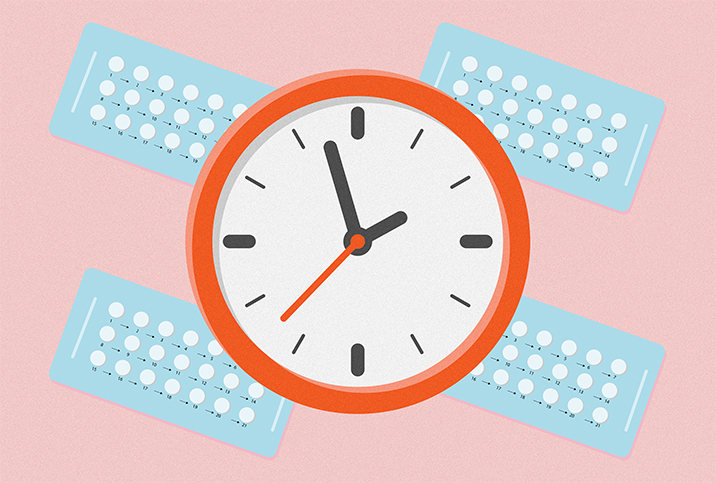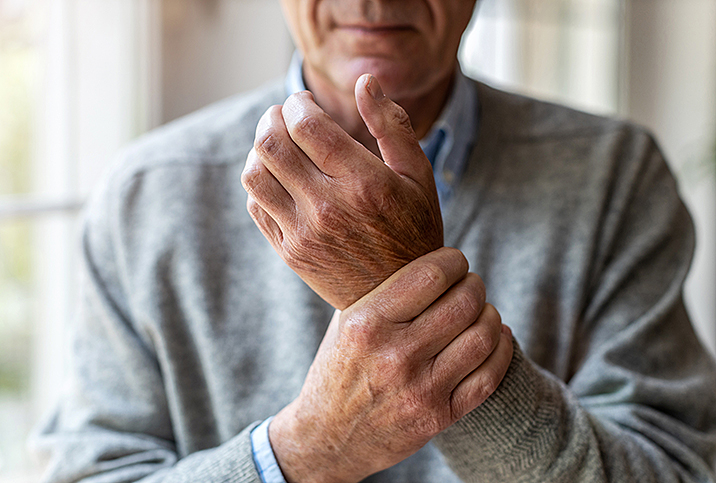Has Your Period Gone AWOL? You Need to Know About RED-S

Although menstruation looks different for each person, missing your period for more than three months is a red flag that something is wrong. If you're physically active and dieting, you might be struggling with a rarely discussed condition called relative energy deficiency in sport (RED-S).
RED-S occurs when athletes of any gender do not get enough energy to support the demands of their intensive exercise, which eventually causes poor athletic performance and other health problems.
A missing period is an obvious sign of RED-S in people who menstruate, but the condition influences multiple systems in the body, including metabolism, bone health, immunity, protein synthesis, cardiovascular health and well-being. This results in experiencing symptoms such as digestive issues, poor sleep, anxiety and recurrent infections and injuries.
It is the co-occurrence of these signs that is particularly telling.
"When we look at these symptoms individually, none of them is too alarming, however, when you begin to look at the larger picture, you see how these symptoms point to the body breaking down," said Stephanie Roth-Goldberg, L.C.S.W., a New York City-based licensed psychotherapist and certified intuitive eating counselor who works with athletes experiencing body and eating disturbances.
The cause of RED-S
The underlying cause of RED-S is a lack of energy availability, the amount of energy left over after you remove what is used from exercise and movement.
"Someone very active, that has an active job and does a lot of training, could be at high risk," explained Renee McGregor, P.G.D.I.P., a sports dietitian in Bath, England, who specializes in RED-S. "If energy availability drops below 35 kcals per kg [calories per kilogram] of fat-free mass, this starts to down-regulate biological function in the body and leads to RED-S."
Risk factors
Despite the name, you don't have to be a competitive athlete (or look like one) to suffer from RED-S. It can happen to people of all shapes, sizes and fitness levels. The condition doesn't discriminate by gender, either, according to McGregor.
A 2018 study, published in the European Journal of Sport Science, surveyed women in Ireland who participated in recreational or competitive sports and found almost 40 percent were at risk of low energy availability (LEA), which is a cause of RED-S. Another 2018 study conducted by Nanyang Technological University in Singapore focusing on Chinese recreational athletes suggested an overall prevalence of RED-S of 34.3 percent.
The energy deficit, however, doesn't necessarily result in weight loss.
"The human body does not like being in huge energy deficits and, thus, results in compensatory behaviors which can stop the body from losing weight," McGregor explained. "This is also why low-calorie diets do not work in the long term."
Certain sports can place you at a higher risk.
"Athletes in a sport that is weight/appearance focused, such as gymnastics, weight class sports such as crew or wrestling, and endurance athletes are more likely to get RED-S," Roth-Goldberg said.
The consequences of untreated RED-S
People who have the condition often consider themselves healthy because they exercise regularly, so it can be hard to recognize RED-S as a problem. But the consequences are serious if left untreated.
"One of the long-term consequences is the loss of bone density," Roth-Goldberg said. "Bone loss can be irreversible and lead to osteoporosis."
Not all cases of RED-S are permanent, though.
"One of the physical consequences is a loss of performance," Roth-Goldberg said. "But this can be reversed once the athlete is [energy-balance] restored."
Birth control can sometimes mask the symptoms of RED-S, and some women may be unaware they are suffering from amenorrhea, or delay in menstruation. This is why regular OB-GYN appointments are so important.
The good news is that a slight increase in calories is often enough to bring your cycle back. An additional 300 to 600 calories daily can treat low energy availability, and weight gain can aid recovery of normal menstrual function, according to a consensus statement published in the British Journal of Sports Medicine.
Diagnosing and treating RED-S
The RED-S diagnostic and treatment process needs to be comprehensive.
"To diagnose RED-S, we have to do a full clinical assessment, including blood tests, to ensure that there is nothing medical contributing to the symptoms," McGregor said. "Ideally, any individual who is identified as having RED-S should work with qualified clinical practitioners who have been trained in this specialty and who will also work collaboratively with medics, coaches and physios."
Treatment doesn't necessarily require you to stop exercising altogether.
"This would only be encouraged if there is a serious risk to the individual's health or they are at a heightened risk of injury due to the severe impact of their RED-S on their bone health," McGregor said.
This doesn't mean you can just bump up your food intake and continue with your usual exercise habits, though.
The good news is that a slight increase in calories is often enough to bring your cycle back.
"In most cases, manipulation and periodization of training are required," McGregor explained. "This often means reducing the intensity of training and encouraging some resistance training."
It's not just eating enough overall that is important but also eating enough at the right times. A 2020 study published in Nutrients found that within-day energy balance matters, which is the amount you've eaten at a certain time compared with the amount of activity you've done. For example, if you've completed a hard workout in the morning but don't eat a large meal until later in the day, you're in an energy deficit for several hours, which is hugely stressful for the body.
Treatment also depends on whether RED-S occurred due to deliberately restricting food intake or simply not realizing how many calories are needed to support activity.
"If intentional, then you are working with a clinical eating disorder, which is a psychiatric illness with biological consequences and is more challenging to work with," McGregor said.
Love your body to protect your health
Although RED-S is possible to correct, particularly with support from a multidisciplinary healthcare team, broader changes are needed to stop it from happening in the first place.
"A lot of it is related to the culture within the sport, the constant pressure of modern society, societal ideals and a need to always be achieving," McGregor explained. "The misinformation about health feeds into a poor understanding of what our body needs, how it works and how to fuel it appropriately."
Reducing the emphasis on how your body looks is imperative.
"Taking the focus off appearance and shifting to performance and feel is a great approach to help athletes determine their needs and meet them," Roth-Goldberg advised. "There are more athletes taking care of their mental and physical health now than ever before, and hopefully, that begins a trend with nonprofessional athletes."


















